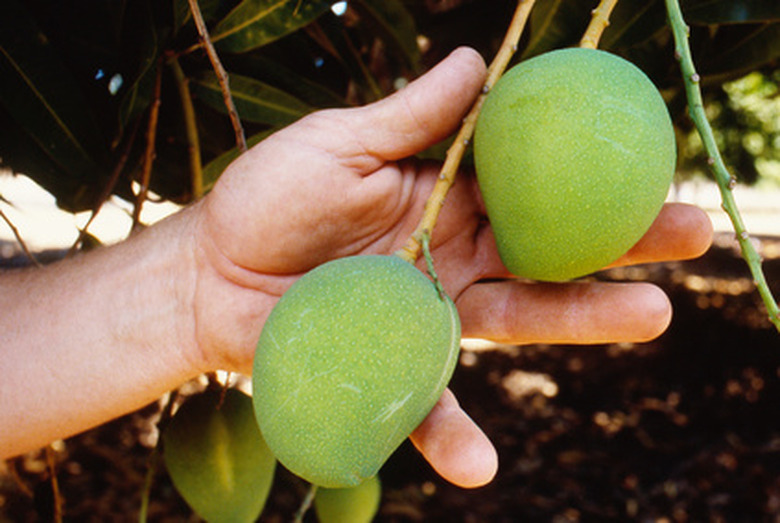How To Prune Mango Trees In Western Australia
Things Needed
- Clippers
- Loppers
- Tree saw
- Chain saw
- Ladder
Mango trees grow very large in tropical climates such as the northern region of Western Australia. Perth is toward the most southerly range that mango trees will do well in Western Australia: its winter low temperature rarely drops below 46 degrees F. and its summertime high seldom exceeds 88 degrees F., according to the Australian government Bureau of Meteorology. Mango trees are often used as shade trees during spring, fall and winter when fruit is not likely to drop. To make your mangoes easier to harvest, you can prune your tree to keep it manageable.
Step 1
Cut all branches that grow within 4 feet of ground level to allow access under the tree. Use a chain saw for large branches or a tree saw or loppers for smaller branches. When you cut a branch, be careful not to cut into the branch collar, which is a raised area at the base of the branch where it connects to the trunk. Also, do not cut into the main trunk.
- Mango trees grow very large in tropical climates such as the northern region of Western Australia.
- When you cut a branch, be careful not to cut into the branch collar, which is a raised area at the base of the branch where it connects to the trunk.
Step 2
Prune all broken, dead and diseased branches throughout the tree to allow it to concentrate its growing energy on healthy branches. The California Rare Fruit Growers website recommends pruning mango trees in late winter or early spring.
Step 3
Prune to stimulate new growth, which will increase uniform fruit production. You can make stiffening cuts by pruning off about 1/3 of spindly branches. This practice will help to create a compact, bushy tree with a strong canopy and will encourage new growth on which fruit will form.
Step 4
Cut off flower clusters during heavy blooming years if you want to help your tree produce fruit on a regular yearly basis. Mango trees often do not produce large quantities of fruit every year, so this practice can help to rectify that situation. Use your clippers and snip off every other flower cluster when it emerges or soon after. Cut flower clusters all the way back to the limb out of which they grow.
- Prune all broken, dead and diseased branches throughout the tree to allow it to concentrate its growing energy on healthy branches.
- This practice will help to create a compact, bushy tree with a strong canopy and will encourage new growth on which fruit will form.
Tip
It’s wise to begin training your tree when it is young: if you wait, you might need to use a chain saw to cut large branches. When you thin your mango tree by removing old and damaged branches, you will help to increase the amount of sunlight that reaches the center of the tree, which helps its health, vigor and fruit production.
Warning
Do not prune your mango tree after it has started to form blossoms or fruit if you want the largest possible harvest. Wear gloves and other protective clothing when you work with mango trees because their sap can cause a skin rash.
